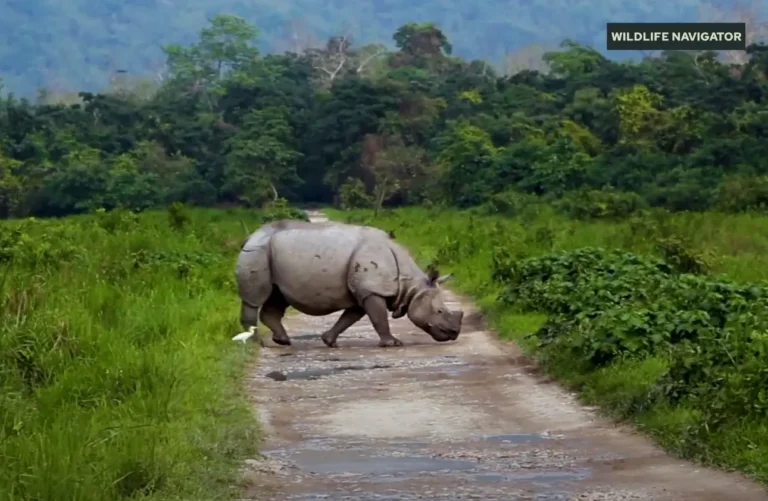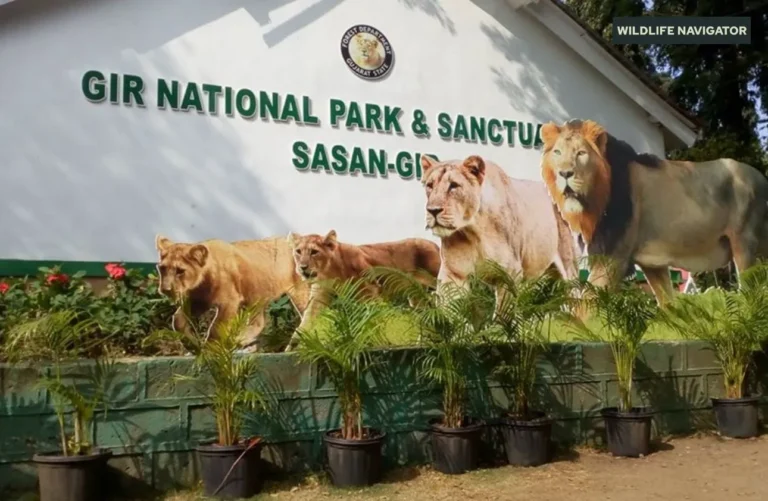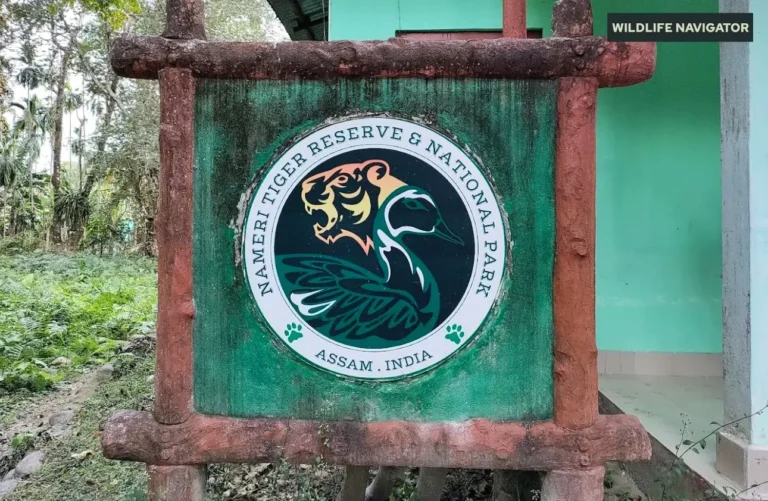Indravati National Park: A Complete Wildlife Guide

Indravati National Park is one of India’s least-explored yet most breathtaking wilderness destinations. Covering an area of about 2,799 square kilometres, the park is named after the Indravati River, which flows along its northern boundary and nourishes its rich ecosystem.
What sets Indravati apart is its role as the last remaining stronghold of the endangered wild Asian buffalo (Bubalus arnee). Alongside this flagship species, the park shelters tigers, leopards, sloth bears, dholes (wild dogs), sambar deer, chital, and a dazzling variety of birdlife. With over 300 bird species and diverse habitats ranging from river valleys to tropical forests, it is a paradise for birdwatchers and wildlife enthusiasts alike.
Beyond its wildlife, the park captivates visitors with its dense sal forests, rolling hills, bamboo thickets, and serene river landscapes. It is not just a destination but an experience of untouched wilderness, where conservation and natural beauty meet.
Quick Facts:
- Location: Bastar region, Chhattisgarh, India
- Area: ~2,799 sq. km
- Famous For: Wild Asian buffalo, Project Tiger reserve, rich biodiversity
- Best Time to Visit: November to June
History, Geography & Landscape
History
Indravati was first declared a wildlife sanctuary in 1969 and later upgraded to a national park in 1981 to safeguard its unique biodiversity. Recognising its importance for tiger conservation, it was also brought under the ambit of Project Tiger, giving it national and global recognition as a critical protected area.
Over time, Indravati has evolved into one of central India’s most important ecological zones, drawing researchers, conservationists, and responsible tourists alike.
Geography
- Situated in southern Chhattisgarh’s Bijapur district, near the borders of Maharashtra and Telangana.
- Lies within the Dandakaranya forests, a region steeped in tribal culture and mythology.
- Bounded by the Indravati River, which supports aquatic species and acts as the park’s lifeline.
Terrain & Features
The park’s terrain is a fascinating blend of:
- Dense tropical forests with sal, teak, and bamboo.
- Rolling plateaus and undulating hills.
- River valleys, waterfalls, and seasonal streams.
- Open grasslands near water sources, perfect for herbivores and bird sightings.
Vegetation
Indravati is classified as a tropical moist deciduous forest. The key vegetation includes:
- Sal (Shorea robusta) – dominant tree species.
- Teak (Tectona grandis) – valuable hardwood in drier patches.
- Bamboo groves – providing cover for herbivores.
- Medicinal plants and shrubs – some traditionally used by local tribal communities.
This diverse landscape not only sustains apex predators like the tiger but also provides critical habitat for the rare wild buffalo, making Indravati ecologically unique.
Indravati Tiger Reserve
Beyond being a national park, Indravati is also designated as a tiger reserve under India’s flagship conservation initiative, Project Tiger. This dual status highlights its importance as both a protected habitat for endangered wildlife and a critical landscape for tiger conservation.
Tiger Conservation
- Indravati is part of the Central Indian Tiger Landscape, linking with forests of Maharashtra (Tadoba, Indravati buffer) and other reserves.
- It provides a safe corridor for tiger movement, essential for maintaining genetic diversity.
- The park is also home to other predators like leopards, wild dogs, and sloth bears, which coexist in this ecosystem.
Dual Importance
- While it is world-famous for the wild Asian buffalo, Indravati’s recognition as a tiger reserve underlines its role in preserving India’s apex predator.
- Protecting tigers here ensures the protection of the entire ecosystem, from herbivores to birds and reptiles.
In essence, Indravati Tiger Reserve is not just about tigers—it is about preserving one of India’s most unique and balanced ecosystems, where big cats and wild buffalo thrive side by side.
Flora and Fauna
Indravati National Park is a biodiversity hotspot, supporting a wide range of plant and animal species. Its varied terrain—from dense forests and grasslands to rivers and waterfalls—creates a thriving ecosystem that attracts wildlife enthusiasts, birdwatchers, and researchers alike.
Flora
The park is predominantly covered by tropical moist deciduous forests, interspersed with bamboo groves, sal trees, teak, and other hardwoods. These forests provide ample food and shelter for herbivores and smaller wildlife species. Key vegetation types include:
- Sal trees (Shorea robusta) – dominant in the forest canopy.
- Teak (Tectona grandis) – scattered across dry patches.
- Bamboo groves – offering cover for many small mammals.
- Medicinal plants – several endemic and rare species used traditionally by local communities.
- Grasslands and riverine vegetation – supporting herbivores and attracting migratory birds.
This dense and varied vegetation not only enhances the park’s beauty but also plays a crucial role in maintaining ecological balance.
Fauna
Indravati National Park is home to some of India’s most iconic and endangered wildlife species. Its fauna can be broadly categorised as follows:
Mammals
- Wild Asian Buffalo (Bubalus arnee) – the park’s flagship species and critically endangered.
- Tigers (Panthera tigris tigris) – part of Project Tiger conservation efforts.
- Leopards (Panthera pardus) – elusive predators thriving in the dense forest.
- Sloth Bears (Melursus ursinus) – often spotted foraging for termites and honey.
- Sambar Deer (Rusa unicolour) – a primary prey species for tigers and leopards.
- Chital (Axis axis) – commonly seen grazing in open grasslands.
- Other species – including wild boars, jungle cats, and small carnivores.
Birds
The park is a paradise for birdwatchers, with over 300 recorded species, including:
- Peacocks – often seen near water bodies.
- Hornbills – nesting in tall trees.
- Eagles and kites – soaring above the forest canopy.
- Migratory species – seasonal visitors enhancing the park’s avian diversity.
Reptiles & Amphibians
- Snakes – including pythons and cobras.
- Lizards – often seen basking in the sun.
- Crocodiles and turtles – inhabiting rivers and ponds.
- Frogs and other amphibians – thriving during the monsoon season.
The park’s rich flora supports a healthy food chain, ensuring that both predators and prey coexist in a balanced ecosystem. For visitors, this diversity makes every safari an exciting and unpredictable adventure.
Wildlife Safari & Activities
Indravati National Park offers an immersive experience for wildlife enthusiasts, photographers, and nature lovers. Its well-maintained safari routes, diverse habitats, and abundant wildlife make every visit memorable.
Wildlife Safari
The park provides guided jeep safaris, the most popular way to explore its dense forests and spotting wildlife safely. Experienced forest guides accompany visitors, sharing insights about animal behaviour, plant species, and conservation efforts.
Key Safari Details:
- Safari Duration: Typically 2–3 hours per trip.
- Best Zones:
- Areas near the Indravati River for wild buffalo and herbivore sightings.
- Open grasslands for spotting tigers, leopards, and chital.
- Dense forest trails for smaller mammals and birdwatching.
- Tips for Safari:
- Start early in the morning or late afternoon for the best sightings.
- Carry binoculars and a camera with a zoom lens.
- Stay quiet and avoid sudden movements to prevent disturbing wildlife.
Birdwatching
With over 300 species of birds, Indravati is a haven for birdwatchers. Popular sightings include peacocks, hornbills, eagles, and seasonal migratory species. Early mornings, especially near water bodies, provide the best birdwatching opportunities.
Photography
Indravati’s varied landscapes and wildlife diversity make it a perfect location for wildlife photography. Visitors can capture stunning images of:
- Majestic wild buffalo grazing near rivers.
- Tigers or leopards prowling through dense forests.
- Colourful birds perched on branches or in flight.
- Scenic views of waterfalls, rivers, and hills.
Nature Trails & Trekking
While the park primarily offers safaris, some areas have guided nature trails, allowing visitors to explore on foot under supervision. These trails are ideal for:
- Observing smaller mammals and reptiles.
- Studying plant species and forest ecology.
- Experiencing the park’s tranquillity away from vehicles.
Educational & Conservation Activities
Indravati also hosts wildlife education programs for students and visitors. Forest officials often provide talks on tiger and wild buffalo conservation, anti-poaching measures, and ecological balance.
Note: Combine jeep safaris with guided nature trails to get a complete wildlife experience, including both the thrill of spotting large mammals and the serenity of walking through untouched forest landscapes.
Entry Fee & Timing
Planning your visit to Indravati National Park requires understanding its entry rules, safari costs, and operational timings. Here’s everything you need to know:
Entry Fees
Indravati National Park has separate charges for Indian and foreign tourists. Fees are usually subject to periodic revision, so it’s best to confirm before your visit.
- Indian Visitors: ₹100–₹200 per person (approximate).
- Foreign Visitors: ₹500–₹800 per person (approximate).
- Vehicle Charges: Additional ₹300–₹500 per vehicle.
- Guide Charges: Optional guide fees of around ₹400–₹600 per safari.
Note: Fees may vary for special safaris, overnight stays in forest lodges, or group bookings.
Safari Charges
- Jeep Safari: ₹1,500–₹2,500 per trip for a private jeep.
- Shared Safari: Slightly cheaper, depending on group size.
- Timing: Morning and evening safaris are generally preferred for wildlife sightings.
Park Timings
- Opening Hours: 6:00 AM – 6:00 PM (subject to seasonal changes).
- Safari Timing:
- Morning Safari: 6:00 AM – 9:00 AM
- Evening Safari: 3:30 PM – 6:00 PM
- Closed Days: Typically closed on select weekdays for maintenance or forest protection.
Seasonal Considerations
- The park remains closed during heavy monsoon months (July–September) due to heavy rainfall and accessibility issues.
- Best months to visit: November to June for ideal weather and better wildlife visibility.
Tips for Visitors:
- Arrive early to secure a jeep, especially during peak season.
- Pre-book safaris through the official forest department portal or authorised travel operators.
- Carry ID proof for entry, especially for Indian nationals.
Best Time to Visit
Timing your visit to Indravati National Park is crucial for a fulfilling wildlife experience. The park’s climate, wildlife activity, and accessibility vary across the year, so choosing the right season can significantly enhance your trip.
Peak Season: November to March
- Weather: Pleasant, with daytime temperatures ranging from 20°C to 30°C and cooler mornings and evenings.
- Wildlife Sightings: High probability of spotting tigers, leopards, and wild buffalo, as animals are more active during the cooler months.
- Advantages: Clear skies, dry forest trails, and comfortable safari conditions. Ideal for photography and birdwatching.
Summer: April to June
- Weather: Hot, with temperatures ranging from 30°C to 40°C.
- Wildlife Sightings: Animals often gather near water sources, making riverbanks and waterholes excellent spots for viewing.
- Tips: Carry sufficient water, sunscreen, and hats. Early morning safaris are highly recommended to avoid midday heat.
Monsoon: July to September
- Weather: Heavy rainfall, with dense forest greenery and flowing rivers.
- Wildlife Sightings: Some animals may be harder to spot due to thick vegetation, but bird diversity is high.
- Note: The park is often closed during peak monsoon for safety and conservation reasons. Check local updates before planning a visit.
Shoulder Months: October
- Weather: Transitional month with moderate temperatures.
- Wildlife Sightings: Animals begin moving out of dense cover, making sightings easier.
- Advantages: Fewer tourists, lush greenery, and the park reopening after monsoon closures.
Pro Tip:
For the best overall experience, plan your visit between November and March, when wildlife is active, the weather is comfortable, and all safari zones are fully accessible.
How to Reach Indravati National Park
Indravati National Park, located in the Bastar region of Chhattisgarh, is accessible via multiple modes of transport, including road, rail, and air. While the park is somewhat remote, the journey adds to the adventure and natural experience.
By Air
- The nearest airport is Jagdalpur Airport (IXJ), approximately 150 km from the park.
- Jagdalpur is well-connected to major Indian cities such as Raipur, Hyderabad, and Visakhapatnam.
- From the airport, visitors can hire taxis or use private vehicles to reach the park.
By Train
- The closest railway station is Jagdalpur Railway Station, around 145 km away.
- Trains connect Jagdalpur to cities like Raipur, Vishakhapatnam, and Bhubaneswar.
- After reaching Jagdalpur, one can hire taxis or buses to reach Indravati National Park.
By Road
- Chhattisgarh State Highways and national highways connect the park to nearby cities and towns.
- Jagdalpur to Indravati is about a 4–5 hour drive, depending on road conditions.
- Visitors can opt for private cars, taxis, or local buses.
- Road trips also provide scenic views of Chhattisgarh’s forests and tribal landscapes.
Suggested Itineraries
- From Raipur: Take a 10–12 hour road journey via Jagdalpur or combine a flight to Jagdalpur and a road trip to the park.
- From Hyderabad: About 8–9 hours by road, passing through scenic forests and small villages.
Pro Tips:
- Plan your travel to arrive early in the day, giving you time for a safari.
- Roads in the region can be hilly and forested; hire experienced drivers familiar with local conditions.
- Carry essentials like water, snacks, and a first-aid kit for the journey.
Accommodation Options
Indravati National Park offers a range of accommodations to suit nature lovers, adventure seekers, and luxury travellers. Staying nearby allows visitors to enjoy early morning and late evening safaris, maximising wildlife spotting opportunities.
Inside the Park
- Forest Rest Houses / Eco-Lodges:
- Managed by the Chhattisgarh Forest Department, these lodges offer basic yet comfortable facilities.
- Ideal for visitors who want to stay close to nature and experience the park’s tranquillity.
- Booking is usually done through the forest department or official portals.
- Limited availability, so early reservations are recommended.
Nearby Hotels in Jagdalpur
- Budget Options:
- Small guesthouses and lodges offering essential amenities.
- Approximate charges: ₹800–₹1,500 per night.
- Mid-Range Hotels:
- Comfortable rooms with modern facilities, including Wi-Fi, room service, and in-house dining.
- Approximate charges: ₹2,000–₹3,500 per night.
- Luxury Hotels & Resorts:
- High-end resorts offering spa services, swimming pools, and guided excursions.
- Ideal for travellers seeking comfort alongside wildlife adventures.
- Approximate charges: ₹4,000–₹8,000 per night.
Tips for Accommodation
- Book in advance, especially during peak season (November to March).
- Choose accommodations near Jagdalpur or park entry points for easier access to safaris.
- Staying inside forest lodges enhances the experience, allowing early morning or night activities without long commutes.
Pro Tip: Combine your stay with local sightseeing in Jagdalpur, such as visiting Chitrakote Waterfalls or exploring tribal villages, for a complete Bastar region experience.
Tips for Visitors
A visit to Indravati National Park can be a truly memorable experience if planned carefully. Following these tips will help ensure safety, comfort, and responsible tourism.
Wildlife Safety Tips
- Always stay inside the safari vehicle; do not attempt to approach or feed animals.
- Follow the instructions of forest guides at all times.
- Avoid loud noises that can disturb the wildlife.
- Keep a safe distance from predators like tigers and leopards.
Photography Tips
- Carry a DSLR or camera with a zoom lens to capture wildlife from a safe distance.
- Early morning or late afternoon is ideal for natural lighting and active animal sightings.
- Use tripods or stabilizers for sharper images, especially for bird photography.
- Avoid using flash photography, as it can disturb animals.
Do’s and Don’ts
Do’s:
- Carry sufficient water, snacks, and sun protection.
- Wear light, comfortable clothing in earthy colours to blend with the environment.
- Respect the park’s rules and participate in eco-friendly practices.
- Keep garbage with you; do not litter inside the park.
Don’ts:
- Do not pluck plants, disturb nests, or harm wildlife.
- Avoid smoking or lighting fires in forested areas.
- Do not venture into unauthorised zones; stick to designated safari routes.
- Avoid bringing pets or loud music devices inside the park.
Additional Tips
- Pre-book safaris to avoid last-minute delays.
- If visiting during summer, carry a hat, sunscreen, and mosquito repellent.
- Maintain silence and patience; wildlife sightings often require waiting quietly.
Conclusion
Indravati National Park is a true gem of Chhattisgarh, offering an unmatched wildlife experience in the heart of central India. From the rare wild Asian buffalo to majestic tigers, leopards, and over 300 species of birds, the park is a haven for nature lovers, wildlife photographers, and eco-tourists alike.
Its dense forests, rolling hills, rivers, and waterfalls create a serene backdrop, making every safari, nature trail, or birdwatching excursion memorable. Whether you are an adventure seeker, a wildlife enthusiast, or someone looking to reconnect with nature, Indravati provides a perfect blend of adventure, education, and conservation awareness.
Visiting Indravati National Park is not just about observing wildlife—it is about experiencing and respecting the delicate balance of nature. By following park guidelines, supporting eco-friendly tourism, and embracing the spirit of responsible travel, every visitor can contribute to preserving this precious ecosystem.




